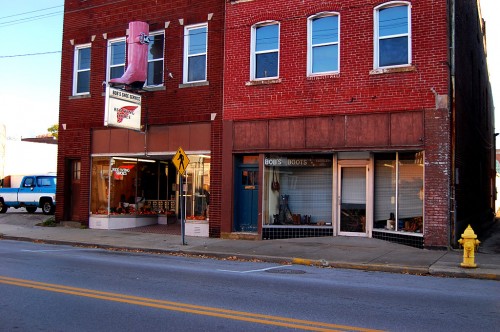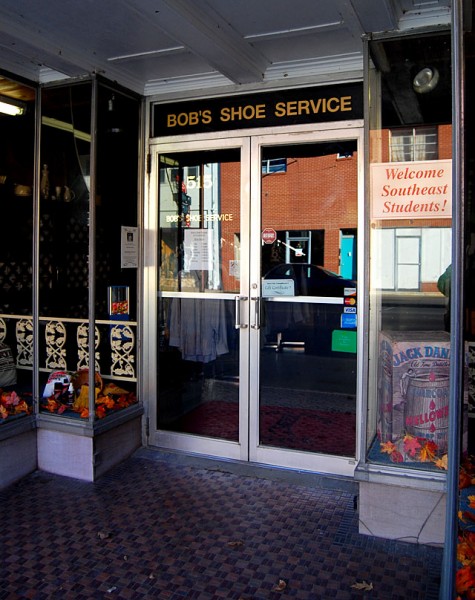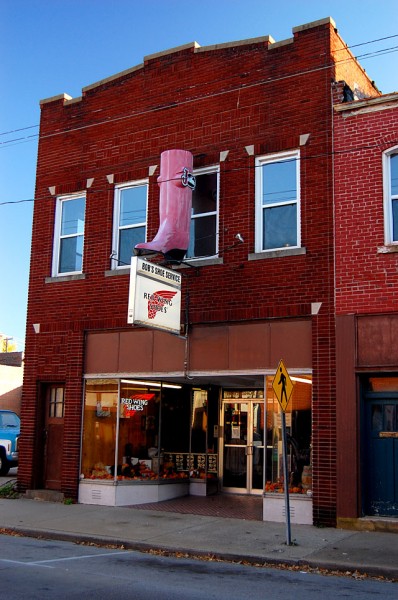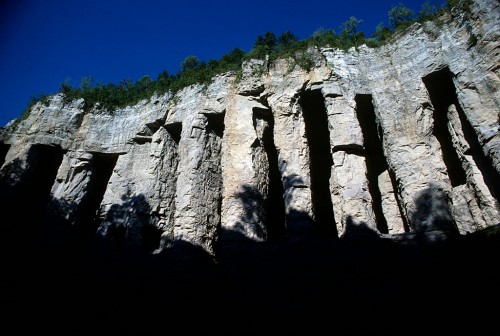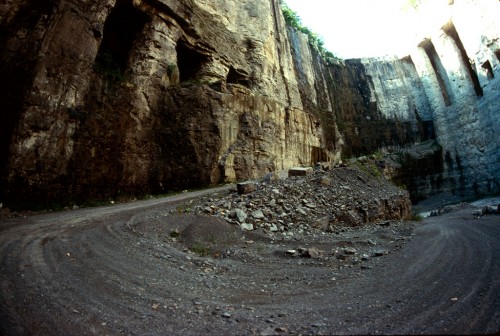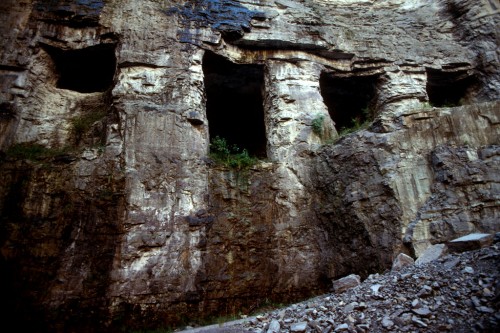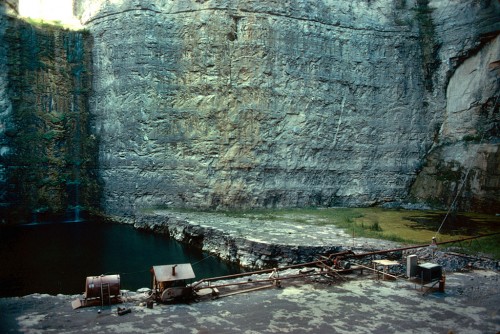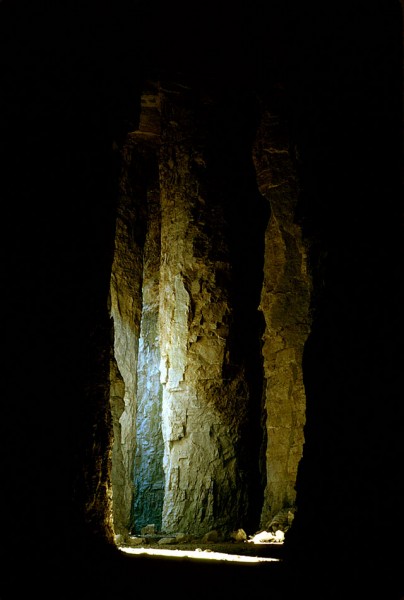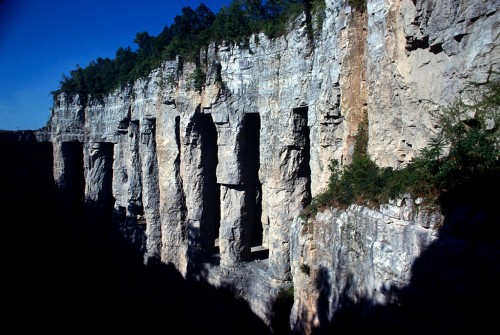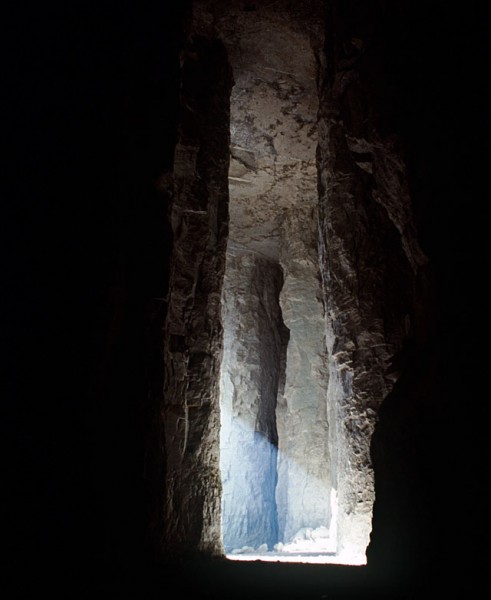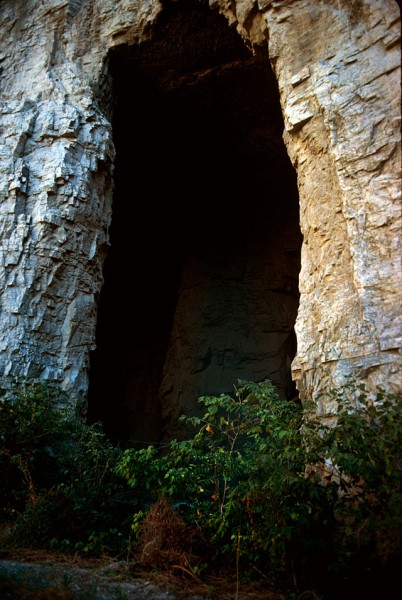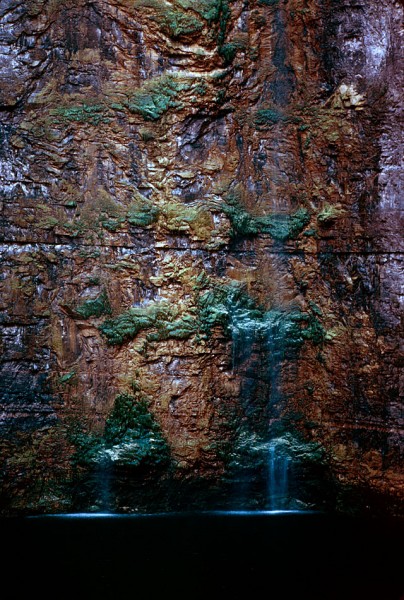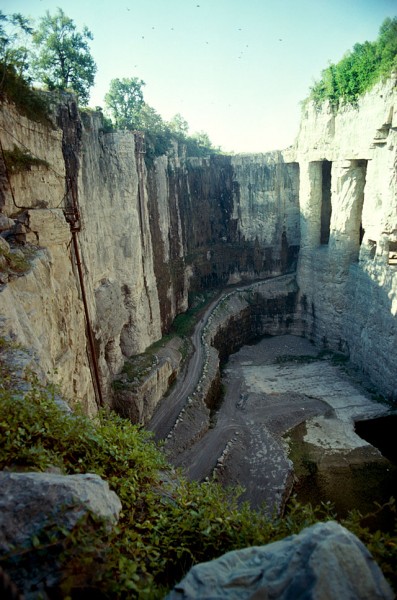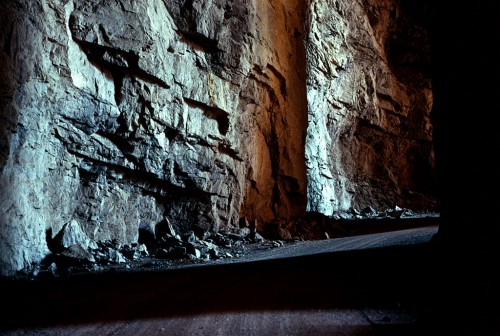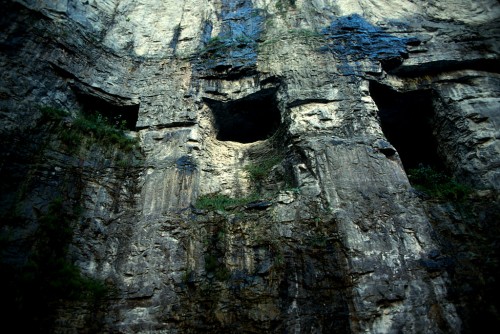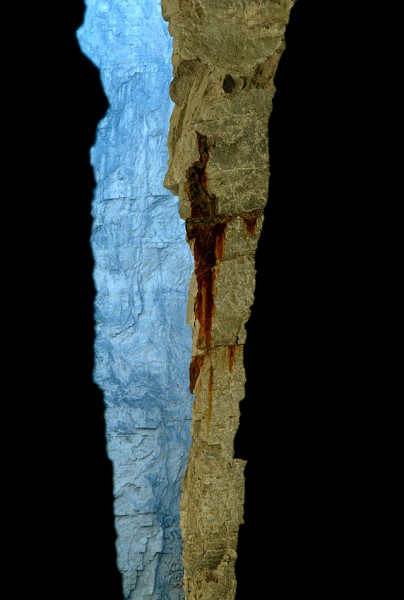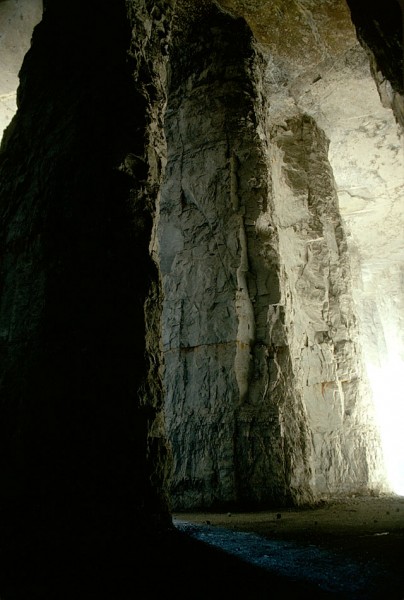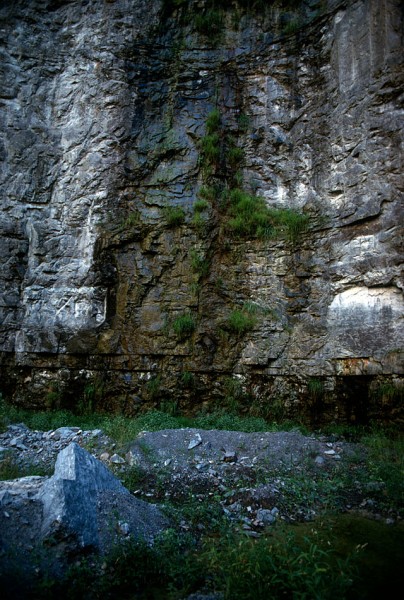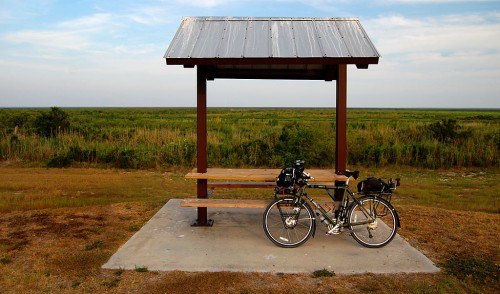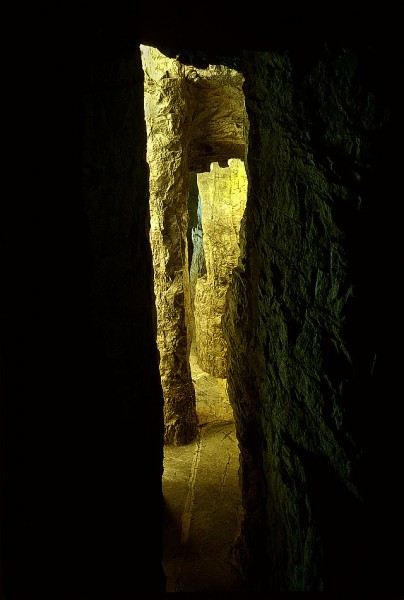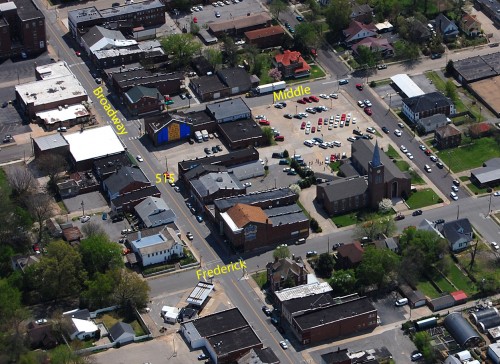 Reader Larry Points left a comment on yesterday’s story about Bob’s Shoe Service that set me off to do the research I should have done last night about businesses at in the 500 block of Broadway:
Reader Larry Points left a comment on yesterday’s story about Bob’s Shoe Service that set me off to do the research I should have done last night about businesses at in the 500 block of Broadway:
Am I mistaken, or was Wissman’s barber shop in this location prior to Bob’s Shoe Service (or perhaps it was in a storefront that went away for the adjacent parking lot)? My Dad’s Parisian Cleaners was across the street at 510 Broadway.
Here’s aerial photo taken April 17, 2011, that shows the neighborhood in question. Bob’s Shoe Service is at 515 Broadway. Wissman’s Barbershop was were the parking lot is to the east of Bob’s. Trinity Lutheran Church is at right center. Annie Laurie’s Antiques is the white building on the northeast corner of Broadway and Frederick. Shivelbine’s is across the street from Annie Laurie’s.
515 Broadway Background
Taken from stories in The Missourian:
- June 17, 1921 – Ad for Scott’s Coffee Store offered 10 lbs. pure cane sugar for 75 cents and promised freshly made peanut butter while you wait.
- Oct. 14, 1921 – G.W. Tallent had an addition built onto his barber shop because he couldn’t find a bigger building to buy.
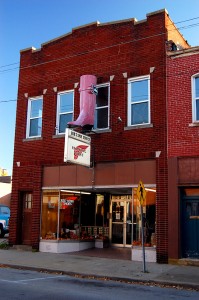 Dec. 11, 1924 – The Square Deal Variety Store advertised you could buy a velocipede for $2.75 up to $12.
Dec. 11, 1924 – The Square Deal Variety Store advertised you could buy a velocipede for $2.75 up to $12.- Dec. 15, 1930 – Curious ad says “Regardless of what your stamp book may state, Bankers’ and Merchants Christmas Saving Stamps are now good any time before or after the first of the year. Do your Christmas shopping with these Christmas Savings Stamps – Profit-Sharing Stores. (Then it lists more than a dozen merchants whose names you’ll recognize)
- July 15, 1935 – Square Deal Variety Store celebrates 20th anniversary with double Eagle Stamps.
- April 16, 1942 – The battle to defend Australia, New Zealand and the islands of the South Pacific against the Japs is of particular interest to Mr. and Mrs. C.H. Shively, who own and operate the Square Deal Variety Store. They spent about 13 years in Australia before coming to Cape Girardeau. He was a representative of an American firm selling merchandise in that area. They didn’t reside in any particular place, but were traveling all the time. Mr. Shively said that he stayed in at least 500 hotels, as many as three in one day.
- Oct. 29, 1945 – Norval Randol, recently discharged from the Army after five years of service, has completed negotiations for the purchase of the Square Deal Variety Store and building from Mr. and Mrs. C.H. Shively. Mr. and Mrs. Shively have operated the store for 29 years, 22 of them in the present location. Prior to that, it was located in the I. Ben Miller drug store building.
- May 22, 1948 – Narvol A. Randol, owner of the Square Deal Variety Store, has installed a complete sales and service department for Maytag appliances. Walter R. Balcom is manager of the department.
- April 7, 1967 – Bob’s Shoe Shop, which has been located the past nine years at 633 Broadway in a building owned by Martin Hecht, has moved to new quarters at 515 Broadway. It now occupies triple its former space in a building purchased by the shop’s owners, Mr. and Mrs. Robert Fuller, from Rex Lambert, who formerly operated a fabric shop there, but has since moved to a new location on Kingshighway north.
- June 29, 1975 – A story and pictures about Bob Fuller turning cowhide into fine saddles.
- June 20, 1985 – Bob’s Shoe Service has expanded several times to offer the largest selection of boots between St. Louis and Memphis. The latest expansion was to acquire the adjoining building at 517 Broadway. This has been converted to the BOOT ROOM, a showroom featuring over 2,500 pairs of boots.
507 Broadway
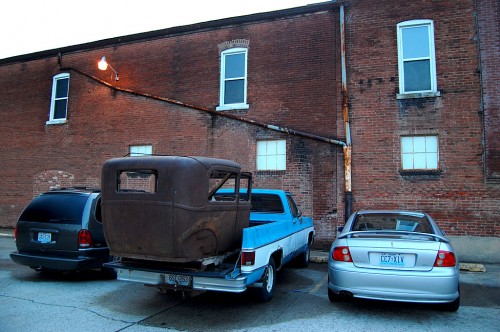 A number of buildings were torn down on the south side of the 500 block of Broadway to create this parking lot. This photo is looking west toward Bob’s Shoe Service at 515 Broadway.
A number of buildings were torn down on the south side of the 500 block of Broadway to create this parking lot. This photo is looking west toward Bob’s Shoe Service at 515 Broadway.
Missourian stories and advertisements:
- June 14, 1922 – Miss Minnie Brandon is expected to return home within the next few days from St. Louis where she purchased a stock of goods for a novelty store, which will open at 507 Broadway. The building she will occupy is now nearly completed. Miss Brandon is the niece of William Vedder.
 Jan. 13, 1928 – Walter Mehrle will open the “Handy Grocery Store” at 507 Broadway, Saturday, and announced he will handle a complete line of groceries, vegetables, with a specialty of the last two. The building was formerly occupied by a fruit store. Mehrle was previously associated in the Mehrle Grocery Co. on the corner of Spanish and Independence streets.
Jan. 13, 1928 – Walter Mehrle will open the “Handy Grocery Store” at 507 Broadway, Saturday, and announced he will handle a complete line of groceries, vegetables, with a specialty of the last two. The building was formerly occupied by a fruit store. Mehrle was previously associated in the Mehrle Grocery Co. on the corner of Spanish and Independence streets.- Oct. 26, 1933 – Advertisement: J. Hughes Watchmaker & Jeweler. Repair work a specialty.
- Jan. 4, 1936 – Attention: I have sold my interest in the Broadway Barber Shop and am now located at the old Talent Shop, 507 Broadway. Lester Wissman.
- Mar. 18, 1938 – PATRICK – A son born yesterday at St. Francis Hospital to Mr. and Mrs. Lester Wissman, 1108 Independence street, was named James Patrick, his birthday being St. Patrick’s Day. Mrs. Wissman, formerly was Miss Marjory Davis of Jackson and Wissman operates a barbershop at 507 Broadway.
- Aug. 31, 1939 – DAUGHTER – Mary Ann is the name that has been selected for the daughter of Mr. and Mrs. Lester Wissman, 101 North Boulevard, born Tuesday. She is the third child in the family, but the first girl, the others being Joe and Pat. She weighed 10 pounds. The father is the owner of a barber shop at 507 Broadway.
- Nov. 29, 1946 – A plate glass window was broken out of the Lester Wissman barbershop, 507 Broadway, early Wednesday night. Police said some young people were playing old-fashioned whip cracker and that a girl was swung around against the glass, breaking it. It was also said the girl’s hand was cut against the glass.

